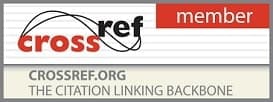- Printed Journal
- Indexed Journal
- Refereed Journal
- Peer Reviewed Journal
P-ISSN: 2394-1685 | E-ISSN: 2394-1693 | CODEN: IJPEJB
Impact Factor (RJIF): 5.38
2016, Vol. 3, Issue 2, Part B
Waist-to-hip ratio measures as predictors of cardiorespiratory fitness among females human kinetics students in university of Ilorin
Author(s): Emmanuel Osei Sarpong
Abstract:
Being overweight is a major risk factor for a variety of chronic ailments and injuries including cardiovascular diseases (CVD), type II diabetes, and certain body site- specific cancers. The study aimed at determining the predictive capacity of waist-to-hip ratio measures and cardiorespiratory fitness levels of female students. The ex-post facto design was used in this study. The population comprised all 200 level female students that offered ‘Fitness for Life’ (HKE 210) for the 2014/2015 academic session numbering 60. The waist –to- hip ratio and the Cooper 12 minute walk/run test were used to collect data for this study. Percentage was used to answer research questions while the PPMC and Multiple Regression analysis were used to test the hypotheses at 0.05 alpha level of significance. The findings showed that (94.9%) were between 17-29 years, (58.3%) had waist-to-hip ratio (WHR) measures detrimental to health while (60.3%) needed improvement in their cardiorespiratory fitness (CRF). A significant positive relationship existed between WHR and CRF. 60.2 % of CRF was predicted by WHR alone. The study concluded that participants did not have the minimum fitness level and WHR was a significant predictor of CRF. It was recommended that assessment of fitness levels should be a regular feature in the events of the HKE department among others.
Pages: 65-69 | 1680 Views 212 Downloads
Download Full Article: Click Here

How to cite this article:
Emmanuel Osei Sarpong. Waist-to-hip ratio measures as predictors of cardiorespiratory fitness among females human kinetics students in university of Ilorin. Int J Phys Educ Sports Health 2016;3(2):65-69.








 Research Journals
Research Journals